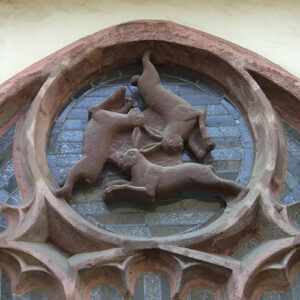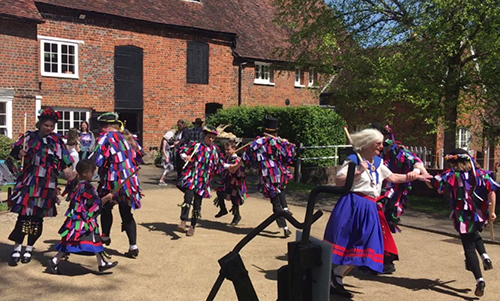Three hares sharing three ears,
Yet every one of them has two
(Ancient German riddle)
Before the three hares made their way onto my new T-Shirt,T-which I bought at the Hastings Jack in the Green Festival, May 2022, they had a very long and curious journey through history.
The earliest motif of three hares sharing ears and going around in a circle was found in cave temples of 6th & 7th century China. As a symbol of Buddhist and Islamic art, it decorated metalwork, ceramics, coins and textiles, and travelled along the Silk Road into Europe. Here it appears in churches in England, France and Germany as well as in synagogues, particularly in the Askenaz region in Germany.

In England the rotating rabbits came to inhabit churches in Devon – 28 of them feature this design in carved wooden bosses in the roof.
The Dartmoor area in Devon was famous for tin mining. By the 15th century the industry was so important, and the people involved in it so powerful, that tinners had their own laws and even parliament. The also contributed to the building of churches in the area, and for some unknown reason adopted the three hares symbol as their mark.
What does it mean? In Far Eastern mythology the hare was a symbol for peace, tranquillity and resurrection. The Chinese believed that ‘the hare in the moon’ helps a goddess prepare elexir of life.
For the Celts, the hare was the sacred animal of the Goddess Oestara, who ruled over the spring and the dawn. The hare did not forget the moon, however, — the moon hare laid the Cosmic Egg, from which emerged all life, and came to be associated with fertility and lunar cycle. The Christian Easter still gives us the Easter Bunny and Easter Eggs.
Whenever the cute bunny is not linked with witches and evil and finds its way into the church, the three hares symbol echoes the Holy Trinity, or, in a synagogue, the three Kabbalistic elements of the world: earth, water and fire/heavens.



